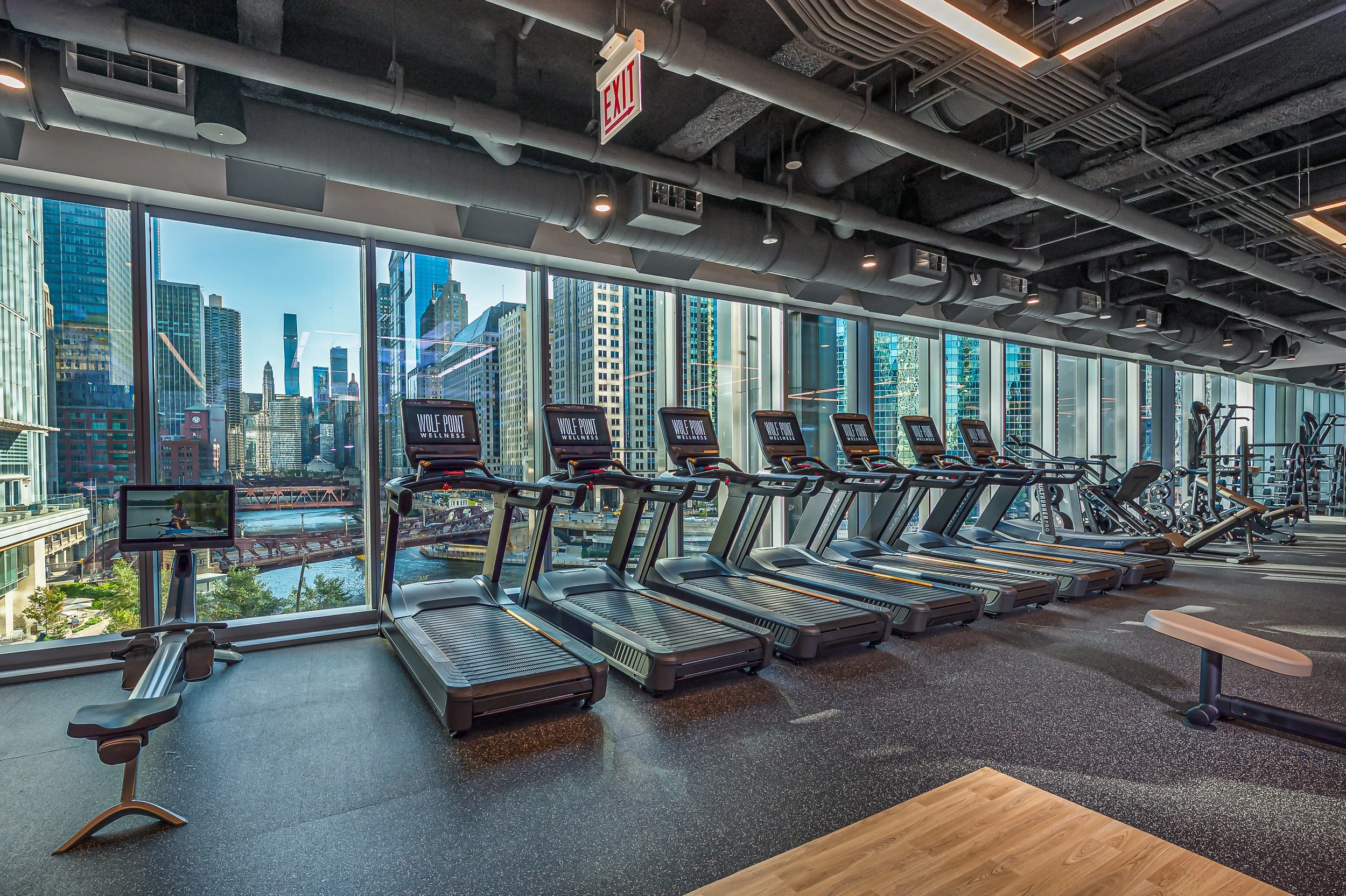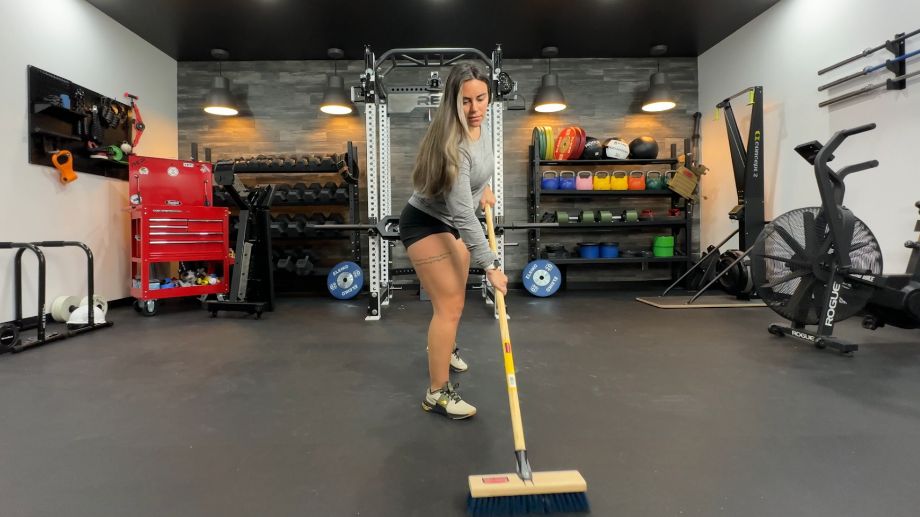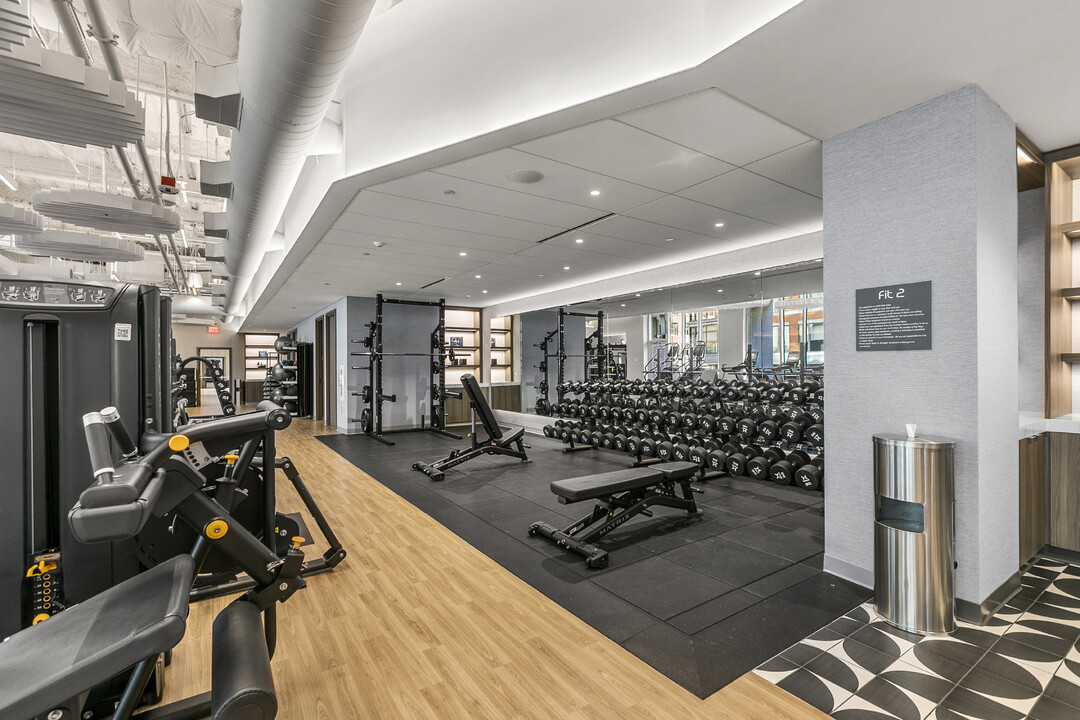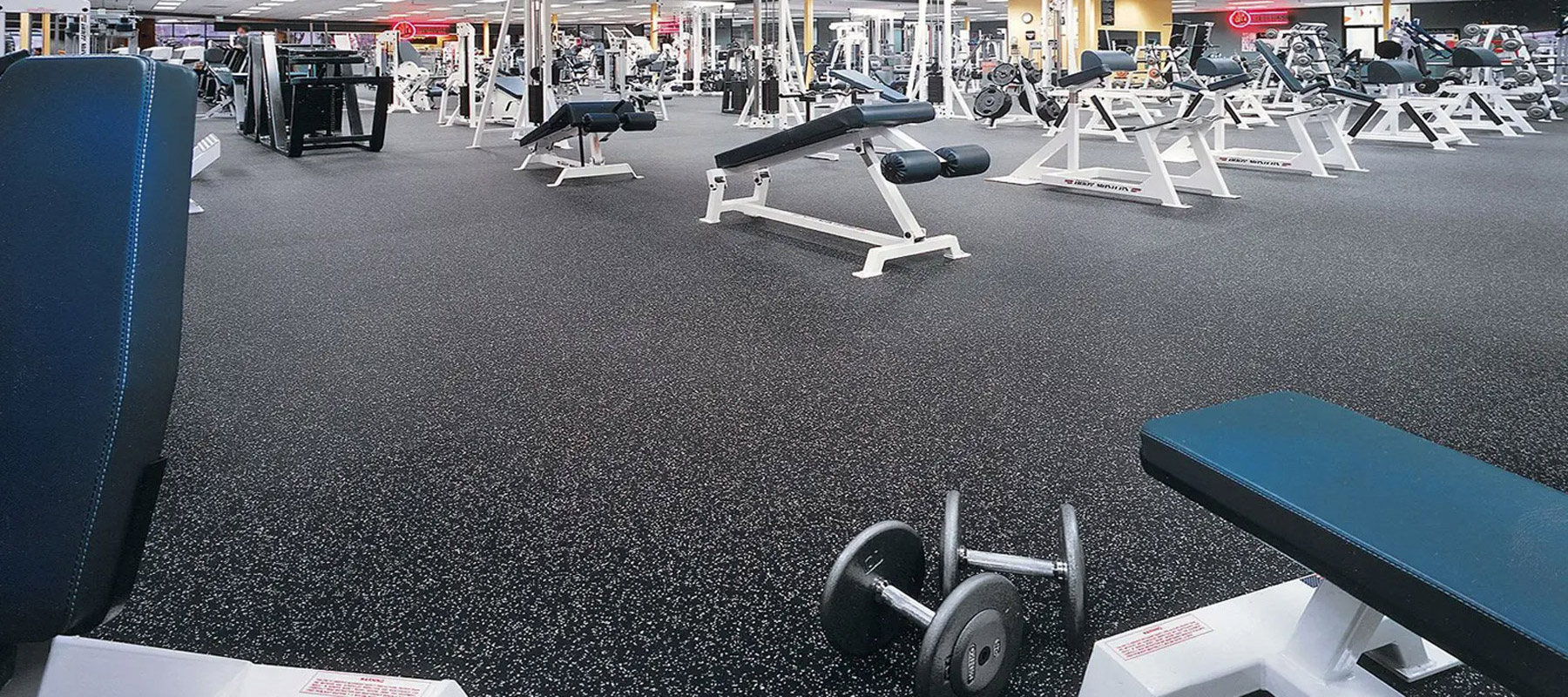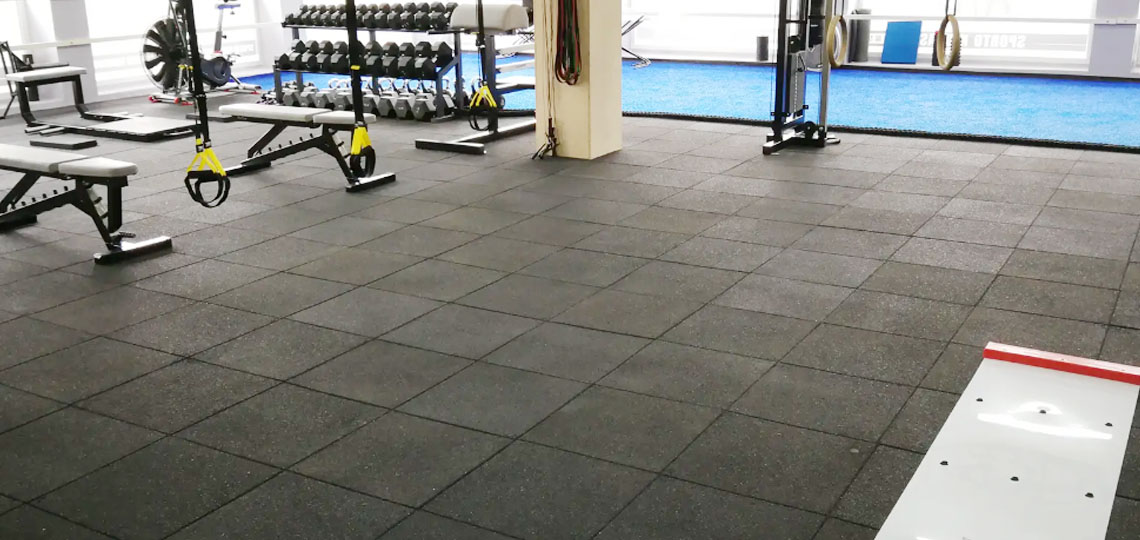Hey there, picture this: You’re in the middle of a killer deadlift session, the bar loaded heavy, your focus laser-sharp. That satisfying clank as the plates hit the ground? It’s music to your ears—until it echoes through the house and wakes the kids upstairs. Or worse, you slip on a sweaty patch and tweak your back. I’ve been there, trust me. Back in my early days training in a cramped garage gym, I ignored the floor entirely. Concrete was fine, I thought—until a dropped kettlebell chipped the slab and left me nursing a sore ankle. That mishap taught me something big: Gym flooring isn’t just a nice-to-have; it’s the unsung hero of functional design. It ties everything together—safety, flow, even that motivational vibe that keeps you coming back. In this piece, we’ll dive deep into why getting it right transforms your space from a makeshift workout corner into a powerhouse of efficiency and joy. Stick with me; by the end, you’ll see your gym with fresh eyes.
What Is Functional Design in Gyms?
Functional design in gyms means creating spaces that work with you, not against you—think seamless movement, zoned areas for different vibes, and setups that spark productivity without the hassle. It’s about blending form and function so every squat rack or yoga mat spot feels intuitive.
At its core, this approach prioritizes how people move through the space. I’ve redesigned a buddy’s home gym last year, turning a cluttered basement into zones that flowed like a pro studio. Suddenly, his sessions doubled in length because transitioning from cardio to lifts felt effortless. No more dodging cables or hunting for space—everything just clicked.
And here’s the kicker: In 2025, with hybrid workouts booming, functional design adapts to tech too, like integrated charging spots or app-synced lighting. It’s not fancy; it’s smart, making your gym a daily go-to rather than a chore.
Why Gym Flooring Matters More Than You Think
Gym flooring is the backbone of that functional magic—it’s what grounds every leap, lift, and lunge, literally. Without it, even the fanciest equipment falls flat, turning potential into pitfalls like slips or subfloor damage.
I remember outfitting my first commercial client, a CrossFit box in the city. We skimped on quality at first, opting for cheap vinyl. Within months, tears from sled drags had folks tripping, and noise complaints rolled in from neighbors. Swapping to proper rubber? Game-changer. Sessions felt safer, energy higher, and retention jumped 20%. Flooring absorbs shocks, quiets the chaos, and even boosts acoustics for those pump-up playlists.
Beyond basics, it shapes the gym’s soul. Color-coded zones guide traffic, reducing clutter and that overwhelming “where do I start?” feeling. In functional terms, it’s the canvas that lets design breathe, ensuring your space performs as hard as you do.
Key Roles of Gym Flooring in Functional Design
Safety First: Protecting Joints and Preventing Slips
Nothing kills momentum like an injury, and smart flooring is your frontline defense. It cushions impacts to spare your knees and ankles, while textured surfaces grip even when sweat flies—crucial for dynamic moves like burpees or box jumps.
Take my garage setup: After that early slip, I added interlocking rubber tiles. No more wipeouts mid-lunge, and my 50-year-old knees thank me daily. Studies show proper flooring cuts injury risks by up to 30% in high-impact zones. It’s not just padding; it’s peace of mind, letting you push limits without second-guessing every step.
Durability Under Fire: Handling Heavy Loads and Daily Grind
Gyms take a beating—weights drop, feet pound, equipment rolls. Quality flooring laughs it off, shielding your subfloor from dents and cracks while lasting years without fading.
I’ve seen it firsthand in a boutique studio I consulted for. Their turf zones held up to endless sled pushes, no fraying after 18 months. Rubber or vinyl options distribute weight evenly, extending gear life too—your $2,000 rack won’t wobble on uneven concrete. It’s the quiet warrior keeping costs down long-term.
Noise and Vibration Control: Keeping the Peace
That thud from a deadlift? Amplified on hard surfaces, it rattles walls and irks roommates. Acoustic flooring deadens sound, vibrating less to create a zen-like focus bubble.
In my multi-level home gym, foam underlay turned chaotic clangs into soft thumps—neighbors never complained again. For apartments or shared spaces, this is gold; it maintains harmony without muting your drive. Functional design thrives in quiet; flooring makes it happen.
Aesthetic and Zoning: Guiding Flow with Style
Flooring isn’t bland—it’s your design whisperer. Varied textures and colors delineate zones, from gritty rubber for lifts to soft turf for agility, creating visual cues that streamline workouts.
I once mocked up a gym layout with bold stripes separating cardio from strength areas. Clients navigated intuitively, cutting setup time in half. It’s subtle psychology: Turf signals “go wild,” while sleek vinyl says “flow easy.” Plus, branded logos etched in? Instant motivation boost.
Popular Gym Flooring Materials: A Breakdown
Rubber: The Workhorse of Gym Floors
Rubber dominates for its unbeatable shock absorption and grip, perfect for CrossFit chaos or powerlifting platforms. Recycled versions add eco-cred without skimping on toughness.
From my experience rolling out 3/8-inch rolls in a home setup, it handles 300-pound drops like butter. Easy to hose down, too—no mystery stains lingering. If you’re lifting heavy, this is your ride-or-die.
Turf: Bringing Outdoor Grit Indoors
Artificial turf shines in functional zones, mimicking grass for sleds, sprints, and drills while draining sweat efficiently. It’s versatile, rolling out for quick reconfigs.
A client turned their unused patio into a turf track—agility sessions exploded in popularity. Low-maintenance and joint-friendly, it’s ideal for hybrid indoor-outdoor vibes, though watch for infill scatter in high-traffic spots.
Foam: Cushion for Low-Impact Flows
EVA foam tiles offer plush comfort for yoga or Pilates, interlocking hassle-free for pop-up studios. Lightweight and portable, they’re a budget win for beginners.
I layered them under a mat in my recovery corner—pure bliss for post-run stretches. But heads up: Not for weights; dents happen fast. Great starter for bodyweight warriors.
Vinyl: Sleek and Multifunctional
Vinyl brings polish with wood-look finishes, resisting slips and cleans in a flash. It’s slim, suiting multi-use rooms where gym meets living space.
In a trendy urban studio I visited, vinyl zones blended seamlessly with lounge areas—no jarring shifts. Durable for cardio, it’s rising in 2025 for its aesthetic edge without the premium price.
Comparing Top Gym Flooring Options
Choosing feels overwhelming? Let’s stack ’em up in this quick comparison table—based on real-world use from home setups to pro boxes. Focus on what fits your routine.
| Material | Durability (1-10) | Shock Absorption | Cost per Sq Ft | Best For | Drawbacks |
|---|---|---|---|---|---|
| Rubber | 9 | Excellent | $2-4 | Heavy lifts, CrossFit | Initial smell, heavier install |
| Turf | 8 | Good | $3-6 | Agility, HIIT | Needs occasional brushing |
| Foam | 6 | Superior | $1-2 | Yoga, stretching | Dents from weights |
| Vinyl | 7 | Moderate | $2-3 | Cardio, multi-use | Less cushion for impacts |
Rubber edges out for versatility, but turf wins for dynamic fun. Match to your moves, and you’ll nail it.
Pros and Cons: Rubber Flooring Deep Dive
Rubber’s the MVP, but no hero’s perfect. Here’s the unvarnished truth from years of installs.
Pros:
- Bulletproof shock absorption—your joints and subfloor stay happy.
- Slip-resistant, even slick with sweat; safer than vinyl in wet sessions.
- Eco-options from recycled tires cut waste and costs long-term.
- Sound-dampening magic for downstairs neighbors (or your own sanity).
Cons:
- Upfront whiff—new rubber can smell like tires; air it out first.
- Heavier rolls mean pro help for big spaces, bumping install fees.
- Fades in direct sun; not ideal for sunlit garages without UV topcoats.
- Premium picks hit wallets harder than foam knockoffs.
Weigh these against your setup—I’ve never regretted investing in quality rubber.
Installation Guide: DIY or Pro?
Nailing install turns “good enough” into pro-level. Start with a clean, level subfloor—sweep concrete, fix dips with self-leveler. Acclimate materials 48 hours to dodge warps.
For tiles: Snap interlocking edges like puzzle pieces, starting center-out. Rolls? Unfurl adhesive (PU glue’s best), cut with a sharp utility knife, roll flat with a heavy roller. My tip: Tape seams first for mock-up; saves headaches.
Pro for 500+ sq ft—precision pays off. Budget $2-5/sq ft extra, but it lasts. One goof I made? Skipping acclimation—buckles galore. Learn from me; measure twice, sweat once.
Common Mistakes and How to Dodge Them
Rushing kills more gyms than bad form. Top blunder: Mismatching material to activity—foam under barbells? Recipe for dents and frustration.
Another: Ignoring subfloor prep. Uneven concrete warps tiles; I’ve patched too many rushed jobs. And skipping zones—crowded chaos kills flow. Budget blind spots too: Cheap mats crumble fast, costing more in replacements.
Pro move: Mock layouts on paper first. Test samples under your gear. These sidesteps saved a client’s $1,000 redo—small habits, big wins.
2025 Trends: What’s Hot in Gym Flooring
This year’s buzz? Sustainability rules—recycled rubber with bio-based tops, slashing carbon footprints without skimping performance. Wood-effect vinyl for that luxe lounge feel, blending zones seamlessly.
Smart tech integrates too: Pressure-sensitive floors tracking reps via apps. And modular turf-rubber hybrids for pop-up classes. I spied a studio with LED-lit zones—pure motivation. Green, clever, customizable: 2025’s flooring flexes with your evolution.
Where to Get the Best Gym Flooring
Hunting deals? Online giants like Flooring Inc. stock rubber rolls galore, with free samples. For custom, hit IRON COMPANY—pro installs nationwide.
Local? Check Home Depot for budget tiles, or specialty shops like Sprung for premium. Navigational hack: Search “gym flooring near me” + your zip—pop-ups often bundle install. Quality trumps convenience; read reviews, touch samples.
Best Tools and Accessories for Gym Flooring
Elevate your setup with essentials: Deadlift platforms for drop zones ($150-300), turf infill rakes ($20), and edge ramps to wheel gear smoothly ($50/pair).
Don’t sleep on underlays—foam adds extra cushion for upstairs gyms. My must-have: A heavy-duty roller ($40) for seamless rolls. These tools turn basic floors into beasts.
People Also Ask
Pulled straight from Google searches—real questions from folks like you building dream gyms.
What is the best home gym flooring for 2025?
Rubber rolls or tiles top the list for durability and value, around 8mm thick for mixed use. They’re versatile, protecting subfloors while cushioning joints—ideal if you’re blending lifts with cardio.
What is gym flooring made out of?
Mostly recycled rubber from tires for toughness, or EVA foam for plushness. Turf’s nylon/poly blends mimic grass; vinyl’s PVC for sleekness. Pick based on impact—rubber rules heavy-duty.
What type of flooring is best for a gym?
Rubber for all-around wins—absorbs shocks, grips wet, lasts forever. Turf for agility fun, foam for yoga bliss. Match to your moves; no one-size-fits-all.
How thick should gym flooring be?
Aim 3/8-inch (10mm) minimum for lifts; 1/2-inch for drops. Thicker quiets noise better upstairs. Test under your heaviest gear first.
Is rubber or foam better for gym flooring?
Rubber for durability and weights—foam dents easy. Foam’s comfier for low-impact, but rubber’s the safe bet for serious sweat.
FAQ
How do I choose gym flooring for a small space?
Measure twice, prioritize multi-use like 8mm rubber tiles—they interlock without waste. Focus on grip and cushion; avoid bulky turf. My tiny office gym thrives on slim vinyl over concrete.
What’s the average cost of gym flooring installation?
$2-6 per sq ft DIY; add $3-8 for pros. Rolls save on seams, tiles on flexibility. Factor longevity—cheaper upfront often costs more later.
Can I install gym flooring over carpet?
Yes, but rip it out first—carpet traps moisture, breeding mold. Direct on subfloor’s best; I’ve seen carpet ghosts haunt installs with odors.
How do I maintain gym flooring?
Sweep daily, mild soap mop weekly—avoid harsh chemicals that degrade rubber. Rotate heavy gear quarterly. Quick vacs keep it fresh; my routine’s 10 minutes max.
Is sustainable gym flooring worth it?
Absolutely—recycled rubber performs identically, cuts waste. 2025’s push makes it trendy too; eco-brands like Ecore last as long, feel good.
Whew, we’ve covered a lot of ground—pun intended. From that garage slip that sparked my obsession to zoning a pro studio that buzzed with energy, gym flooring’s woven into every great workout story. It’s the foundation that lets you chase PRs without the pitfalls, blending smarts with style for spaces that work. So, what’s your next move? Grab a sample, sketch a zone, and build that functional haven. Your future self—stronger, steadier—will high-five you for it. Drop a comment if you’ve got tales from the floor; I’d love to hear.
